How to change a light bulb: analysis of the technical nuances of a non-trivial task
It would seem that the answer to the question of how to change a light bulb is known to almost all people since childhood. But for some reason, accidents occur regularly during such actions.
This indicates that the training of citizens is far from ideal, and in some situations they generally do not possess special skills and concepts about the necessary security measures. Which leads to disastrous consequences.
So that the replacement of the light bulb does not cause electric shock, poisoning with mercury vapor or some other unpleasant situation, let us together analyze the features of this non-trivial task. Particular attention in this article will be given to the process of proper replacement, as well as to the issue of personal safety and proper disposal of dismantled bulbs.
The content of the article:
Bulb replacement procedure
The correct replacement of the bulb begins long before its dismantling / installation, as the contractor or the owner of the room must carry out a number of preparatory work in advance. These include the preparation of protective ammunition, tools and equipment.
Ignoring any of the above items is to their own detriment, since the efficiency, safety and quality of lighting depends on them in many respects. They must be taken into account before going to replace any light bulb.
Step # 1 - preparation for work
In preparation for the replacement of any lamps, one should be aware of the dangers of electric current. Therefore, all work must be performed using a special tool, testing instruments and equipment.
That is, pliers, screwdrivers and everything else must have insulation that can protect against damage. And with its help, you can protect yourself from electricity when its voltage is less than 24 volts, and in other cases it does not guarantee anything.

Work should be carried out exclusively in protective ammunition, which is rubber gloves, special glasses, which will help to protect yourself when dismantling a hot incandescent lamp, as well as in case of accidental damage luminescent or LED bulbs.
The contractor needs to have measuring instruments with him, which will help to verify the operability of the circuit, the lamp, and this will ensure a sufficient level of security. These include indicator screwdrivers and other similar equipment.
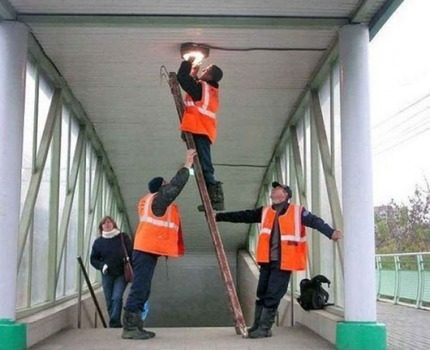
In addition, a person who decides to replace the lamp on his own must first figure out how to turn off the power in the room and do it right. If the issue is not given adequate time, then the necessary security will not be ensured, and this is fraught with dire consequences.
Step # 2 - full blackout
You need to understand that it is at your own peril and risk to carry out any actions in the power supply network - do not call an electrician to replace the lamp? But in case of any consequences, they will have to bear responsibility and it can even be criminal. It should be remembered that any such procedure should be carried out in compliance with security measures.
Guiding documents indicate that only people who have received proper training, have practical skills, and have been instructed can take part in such work. True, in everyday conditions, every consumer who uses electricity for a lighting system faces this problem.
First of all, the network must be de-energized. Moreover, setting the switch to the off position will be insufficient measure. Since it does not guarantee security at all.
For example, there are many cases where electricians were mistaken and the switch did not open the phase wire. Therefore, the current continued to flow to the lamp, which was a surprise for the performer.
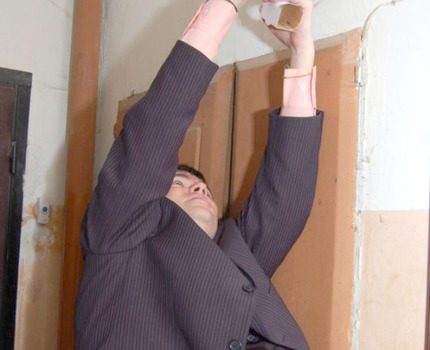
The same often happens when switches with backlight lamps popular today are used. As a result, only a complete blackout of the room where the replacement will be performed can exclude electric shock.
To do this, it is necessary to put the input machine in the off position. Usually they are installed in switchboards, which are located near the apartments. If the circuit has been mounted for a long time, then plugs can be used instead of automatic machines, which means that they need to be unscrewed.
In addition, the contractor must check the absence of the so-called "bugs". Their danger is that the connection of wires is carried out directly, bypassing traffic jams, which threatens with electric shock.
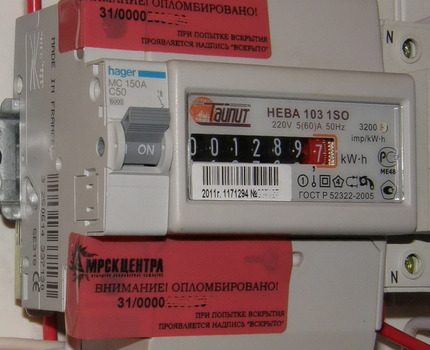
If the lamp receives power from the outlet, then it is necessary to pull out the plug from there. But it should be remembered that residual stress is also life threatening. But such a phenomenon is not uncommon, therefore, the protective measures should be the same as when changing any other lamp.
After the room is de-energized, using a screwdriver-indicator, you need to make sure that the desired result is achieved and that no current is supplied to the lamp. Only after all of the above operations is it allowed to directly replace.
But even during it, you should not lean, lean against metal objects or carry out this procedure in conditions of high humidity.

When the lamp is located at a height, then the performer needs to stock up on a solid ladder, ladder. With the help of such equipment, replacement is allowed at a height of up to 5 meters.
If it will occur above, then it is necessary to use special equipment, which are cranes and more.
In addition, work at heights exceeding 5 m are called high-altitude work and must be performed by specialists with the appropriate clearance.
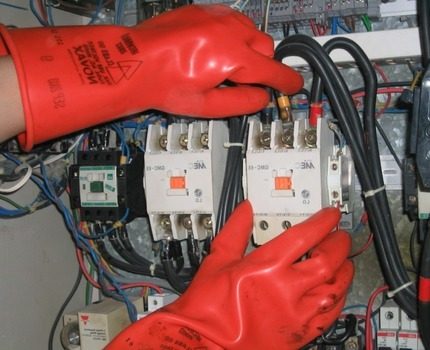
You should not take the listed information on safety measures as frivolous - the same physical education teacher, warehouse worker or any other performer who uses unauthorized equipment and does not have the appropriate skills may be held responsible for the result of his actions and their consequences.
Step # 3 - dismantling / installing lamps
To perform this procedure, it is necessary to carry out in a strictly specified sequence a number of mandatory, but simple steps. And without using any special tool.
These include:
- Removal of lampshades, chandeliers, protective glasses, any decorative elements that impede access to the lamp. All such operations should be carried out in protective ammunition (gloves, glasses).
- Dismantling of lamps - it is performed by twisting movements from right to left. At the same time, you should not clutch your hands at the hot glass, which can cause a burn. It concerns incandescent lamps. To eliminate trouble, it is necessary to use a protective glove with a rubber glove. It will protect against injury if the glass bulb is damaged.
- Installing a new bulb is performed by twisting movements, that is, from left to right.
- Installation of lampshades, decorative and protective elements.
Regardless of the type of lighting fixtures, the replacement procedure is similar and technologically simple.
But when preparing, one should not forget that the glass elements must be wiped with some rags, this will eliminate the greasy traces left by the fingers. Since they can lead to premature failure, which occurs as a result of local overheating.

During work, the contractor needs to hold the tools only by their insulated parts, which is guaranteed to prevent damage.
Before installing a new light fixture, find and bend the contact cartridge lamp. Since they often do not provide the desired contact. The same procedure must be performed when the installed lamp does not shine. Why it should be dismantled anew.
Even if glasses are used when checking the operability of a newly installed lighting device, you should still not be near it. Since often explosions can cause injury.
This primarily relates to incandescent lamps. The reason is that their quality is often quite low, which leads to various unpleasant consequences.
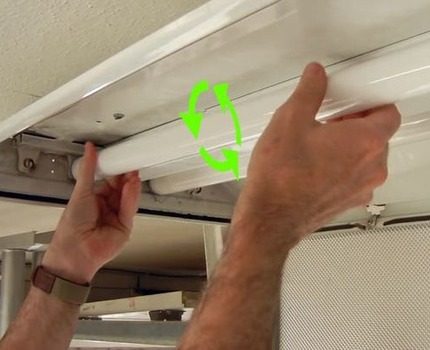
Sometimes the artist is unable to cope with the dismantling of the lamp. In this case, it must be unscrewed together with part of the cartridge. And also it should be remembered that it is not necessary to exert pressure on the glass elements, as this will lead to their damage, after which injuries are possible.
Subtleties of replacing damaged lamps
It often happens that during dismantling / installation damage to glass flasks occurs. In such cases, the base itself will be unscrewed using pliers. But before that you should collect the shattered fragments.
If such a nuisance has occurred with mercury-containing devicethen caution should be exercised. Their depressurization can lead to rapid and significant poisoning by vapors, which in a matter of seconds can fill a volume of 50 cubic meters.
And the excess of permissible norms at this moment will be more than impressive - 160 times. Therefore, when causing damage to the contractor, it is necessary to immediately evacuate all the people in it from the premises.
Then perform ventilation - its duration should be at least 20 minutes. Moreover, these measures are mandatory and the absence of any signs of exposure to mercury vapor should not reassure a person.
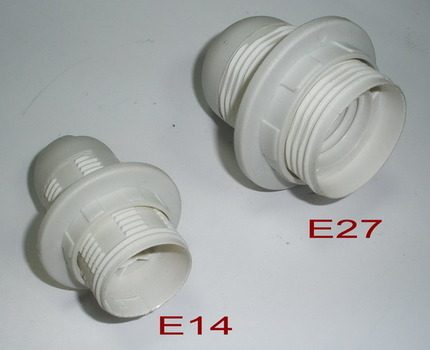
Since they have no color, no smell, but this does not prevent the poison from quickly accumulating in the body, which will lead to poisoning. From which all body systems, organs of vision, without exception, will suffer.
Continuing the replacement of a depressurized mercury-containing lamp is allowed only after thorough ventilation, cleaning of cullet.
Moreover, for its implementation, rubber gloves, glasses, as well as a cotton-gauze bandage, which can be replaced with any wet piece of material, must be used.
After eliminating the consequences, you should call the specialists of the Ministry of Emergency Situations, who will establish whether it is safe for people to be indoors. They also need to pass on a sealed mercury-containing lamp.
How to dispose of an unnecessary lamp?
The dismantled lamp should be handled carefully. That is, it does not need to be placed on hard surfaces, in places where someone careless movement will lead to injury.
It is not recommended to throw them in a general garbage bag. It is best to get rid of unnecessary lamps right away. This will help to eliminate accidental troubles.
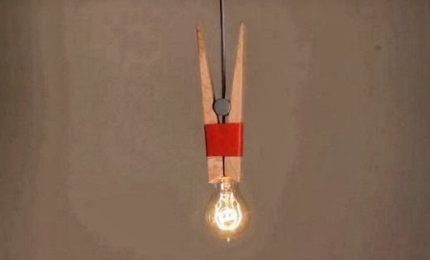
But it should be remembered that only safe incandescent lamps and their LED counterparts are allowed to simply be thrown into the general waste bin. Since they can do no harm other than injuries due to careless handling.
And mercury-containing products should be handed over to responsible persons, which may be electricians of ZHEKs, representatives of structures specializing in recycling, or immersed in containers intended for this purpose. The lamp replacement procedure is considered successful only after their disposal.

And only after all the specified replacement of the lamp can be considered completed and expect positive results in terms of safety, comfort and efficiency.
Conclusions and useful video on the topic
The first video will help to understand the correct procedure for replacing lamps:
The video will help you figure out how to disassemble with a damaged glass bulb:
The main point when replacing all kinds of lamps is the observance of numerous safety measures. Which require that the performer possess certain knowledge, skills, use special tools and equipment.
Only all of the above will make it possible to carry out the replacement correctly, that is, it is safe for the health of the performer and all the inhabitants of the house.
Have you repeatedly witnessed accidents due to non-compliance with electrical safety rules that occurred when replacing a light bulb? Tell us about it in the comments section - these stories will help many home craftsmen who are careless about personal safety to avoid injuries and electric shock.

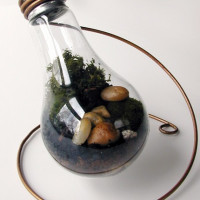 How to disassemble a light bulb: instructions for parsing various types of lamps
How to disassemble a light bulb: instructions for parsing various types of lamps 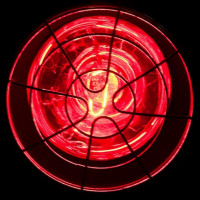 Household infrared lamps: how to choose an IR bulb + a review of the best manufacturers
Household infrared lamps: how to choose an IR bulb + a review of the best manufacturers  Incandescent lamps: types, specifications, how to choose the right
Incandescent lamps: types, specifications, how to choose the right 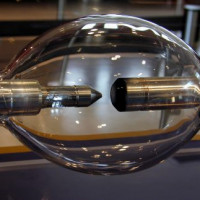 Gas discharge lamps: types, device, how to choose the best
Gas discharge lamps: types, device, how to choose the best 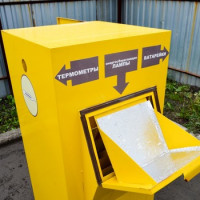 Disposal of fluorescent lamps: where should you dispose of spent appliances
Disposal of fluorescent lamps: where should you dispose of spent appliances 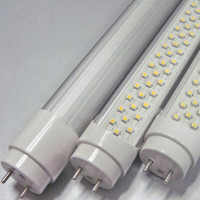 Replacing fluorescent lamps with LEDs: the reasons for the replacement, which are better, replacement instructions
Replacing fluorescent lamps with LEDs: the reasons for the replacement, which are better, replacement instructions  How much does it cost to connect gas to a private house: the price of organizing gas supply
How much does it cost to connect gas to a private house: the price of organizing gas supply  The best washing machines with dryer: model rating and customer tips
The best washing machines with dryer: model rating and customer tips  What is the color temperature of light and the nuances of choosing the temperature of the lamps to suit your needs
What is the color temperature of light and the nuances of choosing the temperature of the lamps to suit your needs  Replacement of a geyser in an apartment: replacement paperwork + basic norms and requirements
Replacement of a geyser in an apartment: replacement paperwork + basic norms and requirements
What could be easier than changing a light bulb. But I will tell you what problems I encountered.
Do not rush to unscrew the old lamp immediately after turning off the lamp, it is hot. In the same way, it is not worth immediately screwing in a lamp brought from the cold.
I also came across the fact that I was buying the replacement lamp incorrectly. Visually, they can be the same, but the base size E14 and E27 are different.
Still, you need to twist the lamp in gloves or take a towel. However, it is advisable not to look at the lamp. Since the flask may crack, this is unlikely, but still. And the main thing is not to make an effort. If the lamp is not twisted, it is better to stagger it a little or twist it in the other direction.
Before changing the bulb, be sure to turn off the electricity. Not always the reason for the refusal to turn on the light bulb in its burnout. If the chandelier has been hanging for a long time, then the contacts may open or maybe the power wire may be broken. Of course, it takes time to turn off, but you should not risk your health. In addition, if you are working in the dark, then take a flashlight to highlight the space. You can stain them with superfluous touches, but in working condition you cannot wipe them from handprints.